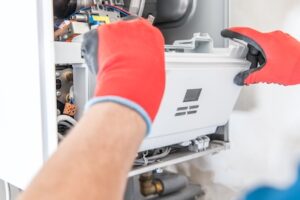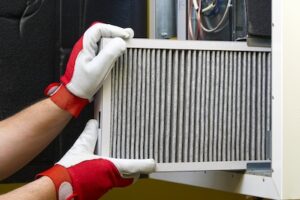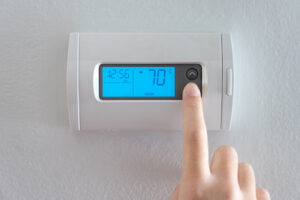10 Tasks to Expect During Regular Furnace Maintenance
We’re heading into the winter season, so if you haven’t already done so, it’s time to schedule your annual furnace tune-up. Many homeowners think that all a furnace tune-up entails is swapping out the filter, but there’s actually quite a bit more to it than that. Regular furnace tune-ups are important to keep your system running smoothly and efficiently all winter long. A professional HVAC technician will thoroughly inspect and clean your furnace during a tune-up and make any necessary repairs. So what are tasks that you should expect in the regular maintenance of your furnace? Here are ten furnace tune-up tasks you can expect during regular maintenance.
- Inspecting the Burner Assembly
- Cleaning the Heat Exchanger
- Lubricating Moving Parts
- Checking Electrical Connections
- Inspecting the Flue Pipe
- Replacing the Air Filter
- Cleaning the Blower Fan
- Testing Safety Controls
- Adjusting Gas Pressures
- Calibrating Thermostats
So, now that you have an idea of the various tasks that will be completed in the regular maintenance of your furnace, let’s examine each one in greater detail.

1. Inspecting the Burner Assembly
During a furnace tune-up, your HVAC technician will inspect the burner assembly for any cracks or damage. They will also clean the assembly and make any necessary repairs. The furnace burner assembly is vital in igniting the fuel that powers your furnace. If it’s not working correctly, it could lead to decreased furnace efficiency or even a complete furnace breakdown.
Spokane heating services experts note that if you have an older furnace, it’s a good idea to have the burner assembly inspected and repaired regularly. An efficient burner assembly will help your furnace run more smoothly and use less energy, saving you money on your monthly energy bills.
2. Cleaning the Heat Exchanger
The heat exchanger is one of the most critical parts of your furnace, so it’s important to keep it clean. It transfers heat from the combustion chamber to the rest of the furnace. A dirty heat exchanger can cause your furnace to overheat and shut down, so it’s important to have it cleaned regularly.
During a tune-up, your technician will remove any debris or buildup from the heat exchanger so it can operate properly. They will also check for any cracks or damage and make necessary repairs. A properly working heat exchanger will help your furnace run more efficiently and last longer.
3. Lubricating Moving Parts
All the moving parts in your furnace need to be properly lubricated for your furnace to run smoothly. From the blower motor to the bearings, your technician will lubricate all of the moving parts during a furnace tune-up. This helps prevent friction and wear and tear, which can lead to costly repairs.
When moving parts aren’t well lubricated, they have to work harder, which can cause your furnace to use more energy. You’re also more likely to hear strange noises coming from your furnace when the moving parts aren’t properly lubricated. If you hear any strange noises, such as squealing or grinding, contact your technician immediately.
4. Checking Electrical Connections
Your furnace has many electrical connections that must be tight and free of corrosion. During a tune-up, your technician will inspect the electrical connections and tighten them if necessary. They will also clean off any corrosion so that the connections are good as new. Remember that your furnace is a complex machine with many delicate parts.
Even a loose electrical connection can cause your furnace to malfunction. It’s also worth checking if the unit is overloading the electrical system in your home, as this could result in a fire. A furnace tune-up is a good time to have any electrical issues addressed so that you can avoid any serious electrical problems that could be a risk to your home.
5. Inspecting the Flue Pipe
The flue pipe carries away harmful gases produced by your furnace, so it’s important to keep it clear of debris or obstructions. During a tune-up, your technician will inspect the flue pipe for any blockages and clear them out if necessary. This should be part of inspecting the venting system, which is responsible for carrying away harmful gases and debris.
The flue pipe must also be properly sealed so that dangerous gases don’t leak into your home. If the flue pipe isn’t properly sealed and venting exhausts or gases from inside the home to the outside, it can cause carbon monoxide poisoning, which can be deadly. Your technician will check the seals and replace them if necessary.
6. Replacing the Air Filter
Your furnace has an air filter that needs to be replaced regularly – typically once every few months. During a tune-up, your technician will replace the air filter with a new one so your furnace can continue operating efficiently. The air filter plays a critical role in trapping dust, dirt, and other airborne particles so that they don’t end up in your furnace or your home.
A dirty air filter can cause various issues, like reduced airflow and decreased furnace efficiency. It can also lead to your furnace overworking itself and shutting down. By replacing the air filter regularly, you can help prevent these issues and keep your furnace running smoothly. This will also improve indoor air quality in your home.

7. Cleaning the Blower Fan
The blower fan is responsible for circulating air throughout your home, so it’s important to keep it clean. Over time, the blower fan can become clogged with dirt, dust, and other debris. This can reduce airflow and make your furnace less efficient. Sometimes, a dirty blower fan can also cause your furnace to overheat and shut down.
During a tune-up, your technician will remove any dirt or debris from the blower fan so it can continue to operate properly. The technician will also check the blower assembly for any damage and make any necessary repairs. By keeping the blower assembly clean, you can help to prevent these issues and keep your furnace running smoothly.
8. Testing Safety Controls
Your furnace has several safety controls that need to be tested regularly to ensure they are working properly. Your technician will test all the safety controls during a tune-up to ensure they are functioning correctly. These safety controls include the pressure switch, the high-limit switch, and the flame sensor.
- The pressure switch is responsible for detecting when there is enough airflow in the furnace
- The high-limit switch is responsible for detecting when the furnace is getting too hot
- The flame sensor is responsible for detecting whether or not there is a flame present in the furnace
If either of these isn’t working properly, it can cause your furnace to overheat and shut down.
9. Adjusting Gas Pressures
If your furnace is not operating at peak efficiency, it could be due to incorrect gas pressures. This can be caused by various reasons, such as a dirty air filter or a blocked flue pipe. Gas pressure that is too low can cause your furnace to overheat and shut down, while gas pressure that is too high can be dangerous and lead to carbon monoxide poisoning.
Your technician will check the gas pressures and make any necessary adjustments during a tune-up. The overall structural integrity of your furnace will also be examined to ensure there are no leaks. A gas leak can be very dangerous, so the technician will also check for that.
10. Calibrating Thermostats
For your furnace to operate at peak efficiency, it is important to have accurate thermostats in your home. Your technician will calibrate your thermostats during a tune-up so that they’re as accurate as possible. This ensures your furnace is not working harder than it needs to. This can save you money on your energy bills and help prolong your furnace’s life.

By having accurate thermostats, you can also improve the overall comfort level in your home. The furnace will be able to maintain a consistent temperature, which can make it more comfortable for you and your family. Opt for smart thermostats, as they can be controlled from your phone, so you can make sure that your home is comfortable no matter where you are.
Schedule Furnace Tune-Up Services
These are just some of the many tasks furnace technicians perform during a regular maintenance visit. This is essential to keeping your system running smoothly and efficiently all winter long. By keeping your furnace in good working order, you can avoid unexpected breakdowns this winter and enjoy peace of mind knowing your family will stay warm and comfortable all season long.
